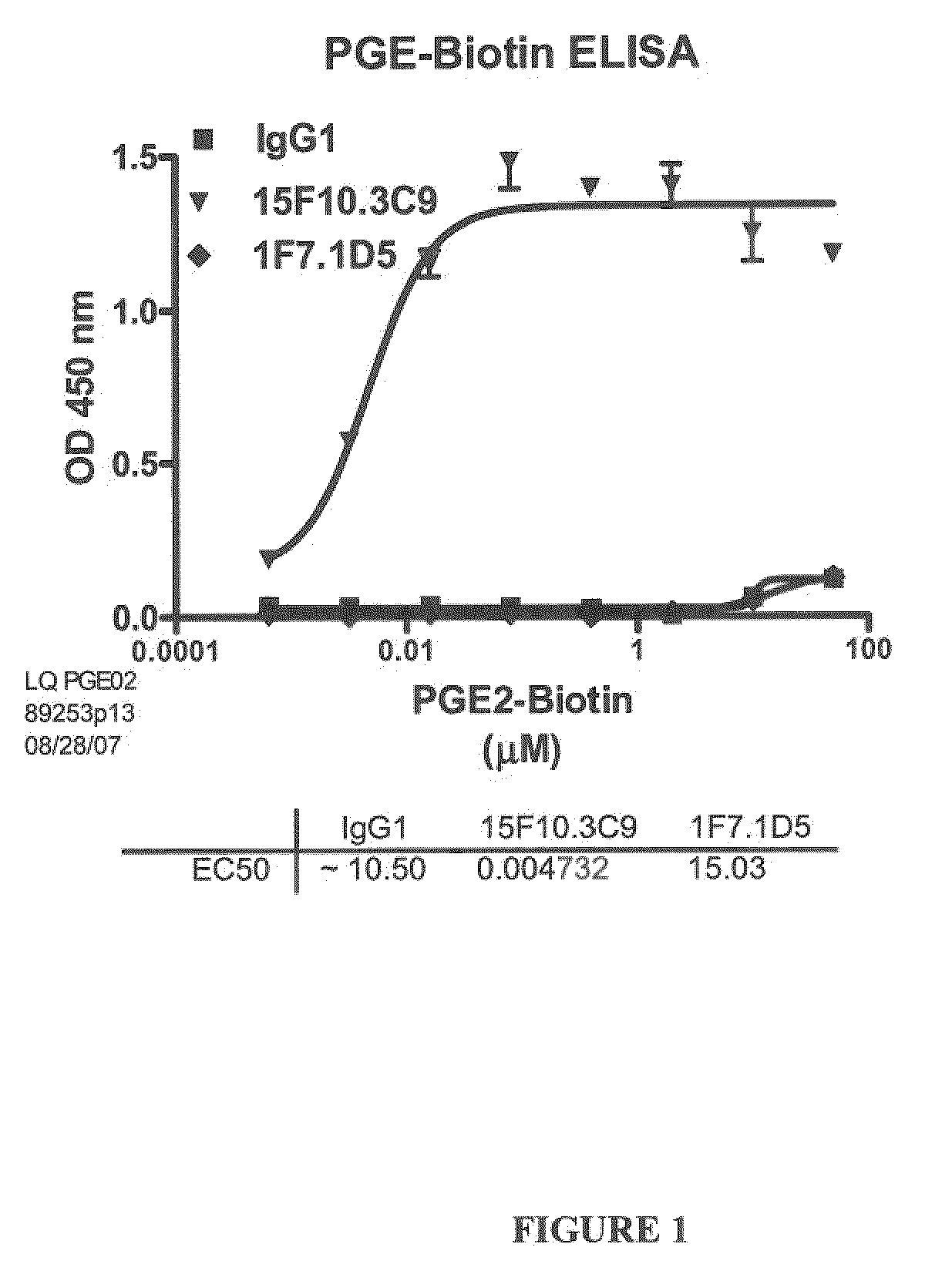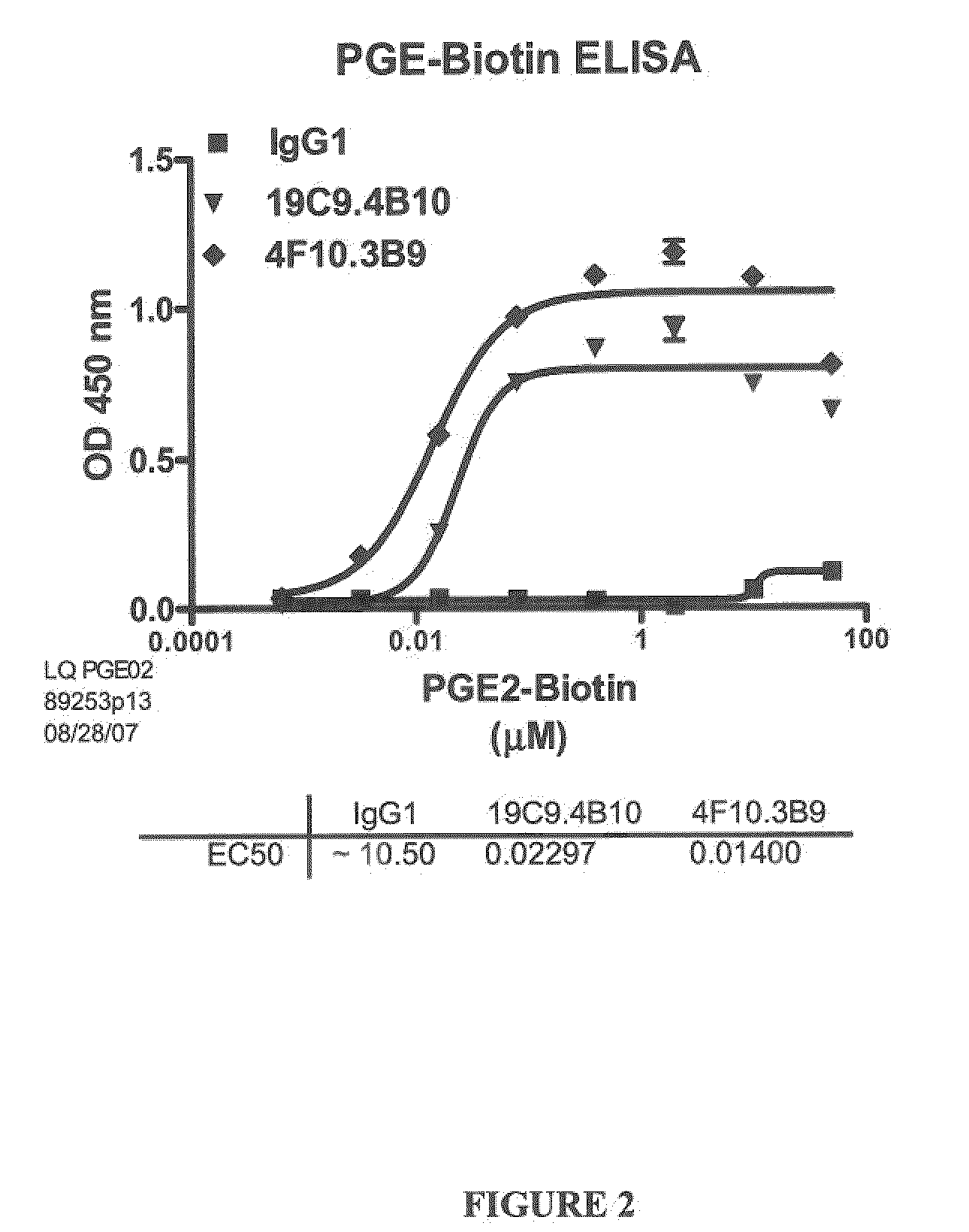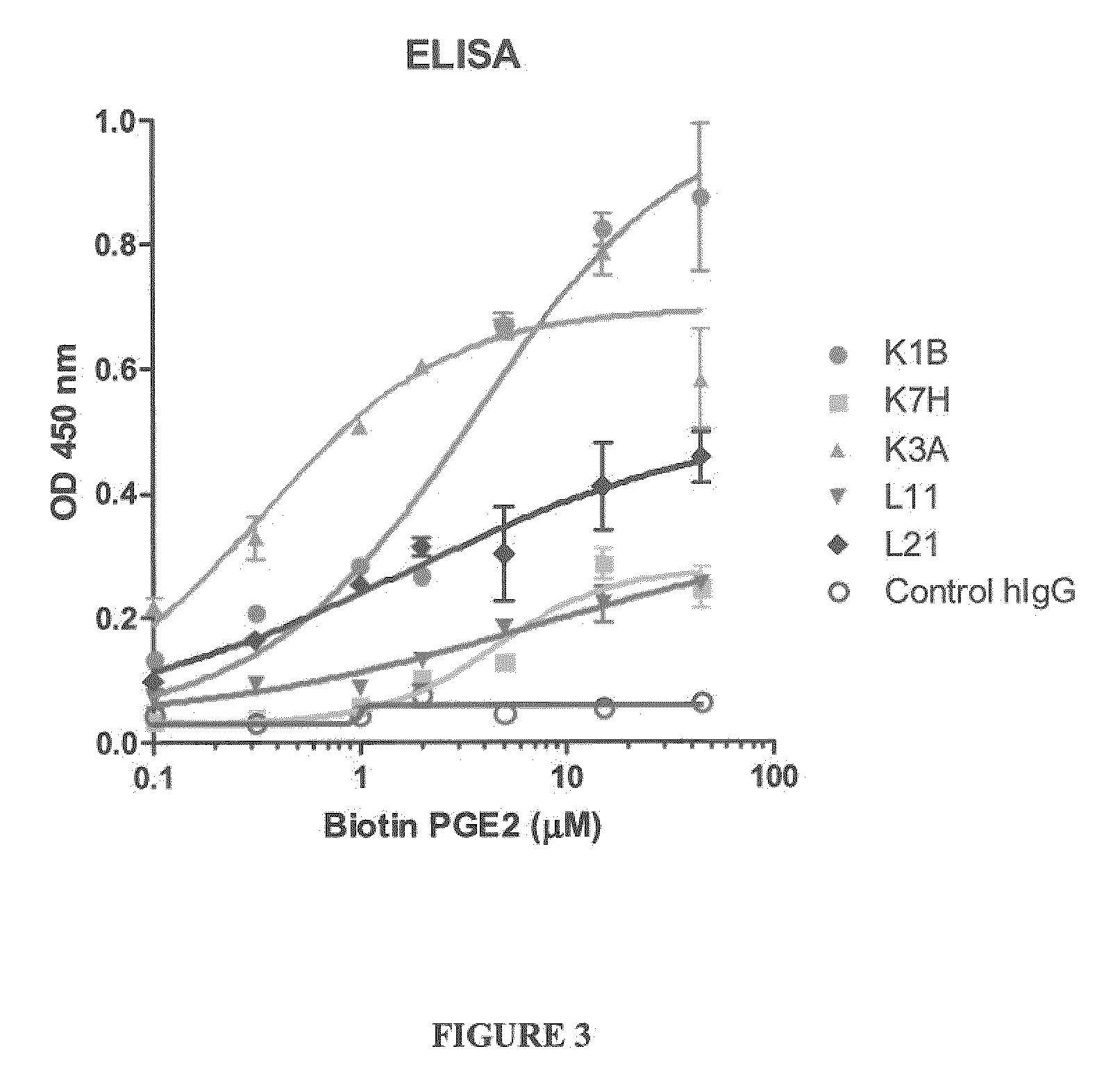Prostaglandin E2 binding proteins and uses thereof
a technology of prostaglandin and e2 is applied in the field of binding proteins, which can solve the problems of cox inhibition-associated adverse effects, cox-2 selective inhibitors were taken off the market, and fda review, so as to prevent one or more symptoms, reduce the effect of toxicity and reducing the risk of side effects
- Summary
- Abstract
- Description
- Claims
- Application Information
AI Technical Summary
Benefits of technology
Problems solved by technology
Method used
Image
Examples
example 1
Generation and Isolation of Anti Prostaglandin E2 Monoclonal Antibodies
Example 1.1
Assays to Identify Anti Human Prostaglandin E2 Antibodies
[0249]The following assays were used to identify and characterize anti-prostaglandin E2 antibodies unless otherwise stated.
Example 1.1.A
ELISA
[0250]Enzyme linked immunosorbent assays to screen for antibodies that bind prostaglandin E2 were performed according to at least one of the two following methods.
Method 1
[0251]ELISA plates (Costar 3369, Corning, N.Y.) were coated with 50 μl of anti-host Fc IgG (Sigma, St. Louis, Mo.) at 2 μg / ml in PBS (Invitrogen Carlsbad, Calif.). Following an overnight incubation at 4° C., washed with PBS and the plate was blocked with 200 μl Superblock (Pierce #37535, Rockford, Ill.). The IgG containing samples were diluted to 1 μg / ml in Assay Buffer (10% Superblock in PBS containing 0.05% Surfactamps (Pierce #37535, Rockford, Ill.) and 50 μl / well added to each well and incubated for 1 hour at room temperature. Plates we...
example 1.1
Competitive Inhibition of PGE2 Binding to PGE2 Receptors by Anti Prostaglandin E2 Antibodies Using a Cell Based FACS Assay
[0262]Competitive inhibition of PGE2 binding to PGE2 receptors, for example EP4, by an anti-PGE2 antibody can be determined using a cell-based FACS assay using PGE2-biotinimide (Cayman Chemical, Ann Arbor, Mich. Cat# 10006987) and Streptavidin-R-Phycoerythrin (SA-RPE; Invitrogen, Carlsbad, Calif., Cat# 15-4301). Cells (1×106) endogenously expressing or stably overexpressing EP4 (i.e., HEK293-EP4 cells or HEK293-EP4-Gα16 cells used for EP4 bioassay) are cultivated in DMEM medium (Invitrogen, Carlsbad, Calif.) / 10% FCS (Sigma #T8665, Sigma, St. Louis, Mo.). Cells are harvested and washed several times with 500 μl washing buffer (PBS / 1% BSA). Cells are resuspended in 500 μl FACS binding buffer (medium without FCS). 20 μl PGE2-biotinimide is added to the cell suspension and incubated at 4° C. for 1 hour. Cells are washed with washing buffer three times. The cells are ...
example 1.2
Identification and Characterization of Anti-Prostaglandin E2 Monoclonal Antibodies
[0267]Hybridomas producing antibodies that bind PGE2, generated according to Examples 1.2.B, were scaled up and cloned by limiting dilution.
[0268]Several antibodies, named 19C9, 4F10 and 15F10 specific for PGE2 were isolated. The affinities of these antibodies were determined by ELISA using biotinylated PGE2 as described in Example 1.1.A (FIGS. 1 and 2). The specificity of these antibodies for PGE2 was further determined by a competition ELISA with various prostaglandins as described in Example 1.B (Table 2).
[0269]
TABLE 2Affinity and Cross Reactivity of 19C9, 4F10, 15F10, and 2B5 Antibodies19C94F1015F102B5EC50 (nM)16 620.048231450.033CrossPGE1: PGE1: PGE1: PGE1: ~20%ReactivityPGA2: ~0.1%PGA2: ~0.1%PGA2: PGA2: ~0.6%IndexPGD2: PGD2: PGD2: PGD2:
PUM
| Property | Measurement | Unit |
|---|---|---|
| dissociation constant | aaaaa | aaaaa |
| dissociation constant | aaaaa | aaaaa |
| dissociation constant | aaaaa | aaaaa |
Abstract
Description
Claims
Application Information
 Login to View More
Login to View More - R&D
- Intellectual Property
- Life Sciences
- Materials
- Tech Scout
- Unparalleled Data Quality
- Higher Quality Content
- 60% Fewer Hallucinations
Browse by: Latest US Patents, China's latest patents, Technical Efficacy Thesaurus, Application Domain, Technology Topic, Popular Technical Reports.
© 2025 PatSnap. All rights reserved.Legal|Privacy policy|Modern Slavery Act Transparency Statement|Sitemap|About US| Contact US: help@patsnap.com



